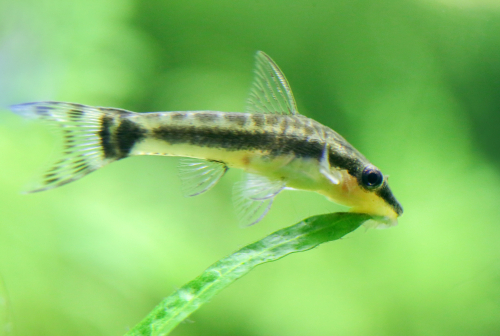Meet the Otocinclus Catfish, also affectionately known as “Otos” or “Dwarf Suckers.” These small, peace-loving freshwater fish hail from the rivers and streams of South America and are a favorite among aquarists, thanks to their exceptional algae-eating abilities.
With their unique appearance, characterized by slim bodies, short fins, rows of armor-like plating, and powerful suckermouths, Otocinclus catfish are fascinating to observe and contribute to a healthier and cleaner aquarium environment.
In the wild, Otocinclus catfish are found in flowing waters, where they spend their time grazing on algae with their specialized mouths. When recreating this environment in a home aquarium, it’s essential to provide a proper diet and tank setup that mimics their natural habitat.
That includes plenty of plant life and hiding spots to make these little cleaners feel safe and secure.
Otocinclus catfish is compatible with a wide range of peaceful tank mates. This makes them a versatile addition to many aquarium setups. Whether you’re a seasoned aquarist or a beginner looking to add variety to your tank, the Otocinclus catfish can be a great choice.
Let’s dive deeper into understanding these fascinating creatures, their dietary needs, ideal living conditions, and more.
Contents
Otocinclus Catfish Basics
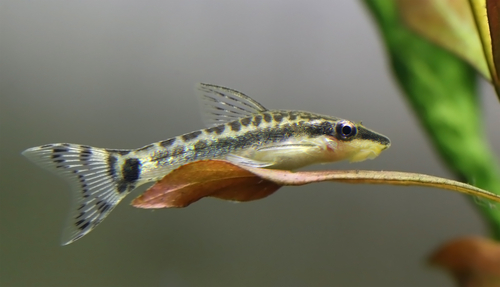
Otocinclus catfish, also known as dwarf suckers, is a genus of small freshwater fish native to South America. They belong to the Loricariidae family and are widely appreciated for their algae-eating abilities and peaceful nature.
There are around 17 known species of Otocinclus, thriving mainly in slow-flowing shallow rivers and streams in their natural habitat.
These fish typically adhere to rocks, driftwood, and other stable surfaces, feeding on algae. The waters in their habitat are moderately vegetated, with good access to sunlight and a soft, sandy riverbed.
Otocinclus catfish usually range from 1.5-2 inches in length, sporting a dark grayish-brown back with a white belly and a distinctive black horizontal line.
In the aquarium hobby, Otocinclus catfish are considered to be an excellent addition to freshwater tanks due to their algae control capabilities. Being diurnal, they are active during the daytime, grazing on algae or resting on flat surfaces like plant leaves and hardscapes.
Unlike their larger cousins, the Plecos, Otos are not known to cause plant damage and are more suitable for smaller tanks. When choosing tank mates, Otocinclus catfish are pretty adaptable, as they are peaceful and can coexist with various other species.
It is important to provide an environment that mimics their natural habitat, which includes slow-flowing water, plants, and hiding spots in the form of rocks or driftwood.
Physical Characteristics
Otocinclus catfish are known for their small size and unique features, making them a popular choice for many home aquariums.
These catfish usually grow to around 1.5 to 2 inches in length, with some species reaching slightly larger sizes. Their typically elongated, cylindrical-shaped bodies are designed for efficient movement in their natural habitats.
Their coloration mainly consists of a brown or olive-green hue on the upper part of their body and white on the lower part. Some Otocinclus species, such as the Golden Otos, display a yellowish tint on their bodies.
The caudal fin of the Otocinclus catfish is slightly forked, contributing to their agile swimming abilities. This fin’s design allows them to navigate the flowing waters in which they naturally thrive.
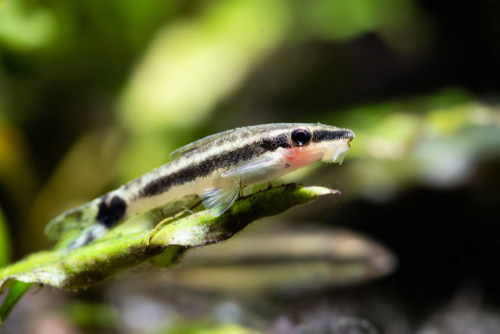
Armor plating is another characteristic of the Otocinclus catfish, which they share with their larger armored catfish cousins. These plates of bony armor help to protect them from potential predators and offer a level of structural support.
In addition to their distinctive coloring, these catfish have a powerful sucker mouth, which they use for grazing on algae on various surfaces. The placement of their mouth on the underside of their head allows them to latch onto and clean surfaces with ease efficiently.
Natural Habitat
Otocinclus catfish, often referred to as “otos,” inhabit the freshwater ecosystems of South America. These fish are primarily found in the water bodies spanning countries like Argentina, Brazil, Paraguay, and Venezuela, with some originating from the Andean foothills and the Amazon region.
In their natural habitat, otos prefer moderately vegetated waters that offer good access to sunlight. The rivers and streams where they dwell typically have a soft, sandy riverbed, allowing these small catfish to cling to rocks, driftwood, and other hard surfaces to feed on algae.
The aquatic vegetation represents a crucial aspect of the otocinclus habitat, as these plants help to maintain water parameters and provide cover for these timid fish. The ideal water conditions for otocinclus include a stable temperature ranging from 72 to 79°F (22 to 26°C), a pH level between 6.0 and 7.5, and moderate water hardness.
Considering the otos’ natural environment, it’s essential to recreate these conditions for captive catfish to ensure their health and well-being. By mimicking these habitats, aquarists can provide a comfortable and suitable environment for these fish to thrive in when kept in home aquariums.
The presence of lush vegetation and good algae growth is crucial to imitate the otocinclus’ natural habitat, along with maintaining appropriate water parameters and providing suitable hiding spots.
Behavior
We already know that Otocinclus catfish are shy and reclusive by nature. However, they are also very social organisms, especially in their natural habitat. They tend to swim about in large schools that may contain anywhere from a hundred to thousands of them. They swirl around each other, seemingly in a playful dance.
This tendency to move in large numbers is very important because it explains why Otocinclus catfish may sometimes fail in a tank environment. They need social interaction but sometimes end up living alone in tanks or without enough friends to ‘school’ with. In fact, the shyness is often a result of this social downsizing. There may be no predators in the tank, but the Otos may perceive that it means there is danger, which makes them turn reclusive.
A curious fact about these fish is that, in the wild, they are often found in the company of Corydoras, which are quite dangerous-looking creatures. While this might immediately seem out of character for such shy and danger-sensitive fish, it actually offers an advantage. The Corydoras have sharp and often venomous spines. Many predators will reconsider attacking them—and, by extension, their Otocinclus comrades.
As nocturnal animals, Otocincluses are most active at night. That’s when you’ll more often find them, in the company of their Otocinclus tank mates, latched on to surfaces at the bottom of the tank and sucking on algae. In the tank, they may hang off the aquarium glass, and you can see their mouths at work. And when there’s not enough oxygen in the tank, they may sometimes swim up to the surface for air.
However, they are also diurnal, which means they are often awake during the day, swimming around the tank at zap-speed and feeding. Their nocturnal habits sometimes come to the fore when they sense danger.
Diet and Feeding

Otocinclus catfish are herbivores known for their algae-eating prowess. These small fish are highly effective at controlling algae growth in aquariums. They latch onto surfaces and graze on various types of algae throughout the day and night.
It is essential to provide a diverse diet for optimal health and longevity, as Otocinclus catfish do not consume all types of algae. For example, they are less inclined to eat hair algae unless they are absolutely starving.
To ensure these fish get proper nutrition, supplement their diet with various vegetables and prepared foods.
Blanched vegetables like zucchini, spinach, and cucumber are popular choices for Otocinclus diets. These vegetables can be easily prepared by briefly boiling them until they soften before adding them to the aquarium.
Some aquarists attach the vegetables to a small rock or suction cup to weigh them down, making it more convenient for the fish to nibble on them.
Additionally, algae wafers or tablets can be an excellent source of nutrition for these fish, as they contain essential nutrients that may not be readily available in their natural diet.Feeding the fish once a day in small amounts will ensure they receive the nutrients they need without polluting the water with excess food.
Balancing the Otocinclus catfish diet with a mixture of live algae, vegetables, and prepared foods will help ensure their health and overall well-being.These fish will thrive in a well-maintained environment, providing aquarium enthusiasts with the added benefit of efficient algae control.
Aquarium Set-Up
When setting up an aquarium for Otocinclus catfish, it is essential to consider certain factors to provide the best possible environment for these small, freshwater fish native to South America.
Begin with selecting an appropriate tank size. Otocinclus catfish only require a minimum tank of at least 10 gallons (10L) since they are small. However, a larger tank is always preferable, especially if you plan to keep a group of these fish together.
Water parameters play a crucial role in maintaining a healthy environment for Otocinclus catfish. A comfortable temperature range for them lies between 72-79°F (22 to 26°C). Ensure that the pH levels stay within 6.0-7.5 and maintain water hardness between 2-8 dGH for optimal health.
Water quality is equally important for these fish. Make sure to use a decent filtration system and maintain proper water circulation in the tank. Regular water changes and tank cleaning are necessary to avoid the build-up of harmful substances and ensure water quality remains pristine.
Lighting in the aquarium should be moderate, as Otocinclus catfish are sensitive to bright lights. Implement a gradual day-night cycle to mimic their natural habitat and promote the growth of aquatic plants.
Keep in mind that these fish thrive in planted tanks with plenty of hiding places, which helps reduce stress and allows them to graze on the algae growth. And speaking of Algae growth, that’s another thing to consider when setting up the right Otocinclus water parameters. These fish tend to thrive in more mature tank habitats with enough algae growth, especially when you plant some.
Tank Mates and Compatibility

Otocinclus catfish are peaceful freshwater fish that thrive in a community tank environment. Due to their small size and non-aggressive nature, they are best suited to living with other peaceful tank mates.
It is important to choose compatible tank mates to ensure the well-being of your Otocinclus, as well as the other inhabitants in your aquarium.
Schooling fish make excellent tank mates for Otocinclus catfish. They enjoy swimming together in groups, and their social nature can help reduce stress for the Otocinclus. Some examples of suitable schooling fish include tetras, rasboras, and small cichlids.
In addition to schooling fish, invertebrates are another great option for tank mates. Amano shrimp and ghost shrimp are compatible with Otocinclus catfish as they share a similar diet and won’t compete for food. These shrimp help to keep the tank clean and can even share algae with the Otocinclus.
Malaysian trumpet snails are beneficial tank mates for Otocinclus catfish. They are peaceful snails that will not bother the catfish and help keep the aquarium substrate free of debris. Furthermore, they can aerate the substrate, which promotes a healthy tank environment.
It is important to avoid housing Otocinclus with aggressive fish or larger species that may see them as prey. Goldfish, for instance, are not suitable tank mates, as they can grow quite large and may consume the smaller Otocinclus.
Additionally, goldfish produce a significant amount of waste, which could negatively impact the water quality of the more sensitive catfish.
By selecting the right combination of peaceful, compatible tank mates, you can create a harmonious community aquarium where your Otocinclus catfish and other inhabitants can live and thrive together.
Care and Maintenance
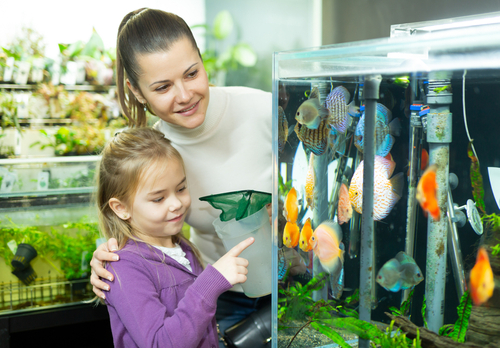
Caring for Otocinclus catfish, also known as otos or ottos, requires attention to their diet, tank environment, and water conditions. These small, peaceful fish are an excellent addition to a planted aquarium, as they help in keeping algae growth under control.
To ensure your otos thrive, it’s crucial to maintain proper water parameters. These fish prefer a temperature range of 72° -82°F (22°-28°C), a pH level between 6.0 and 7.5, and water hardness of 5-15 dKH.
Regular water changes are necessary to keep ammonia and nitrate levels low, as high concentrations can lead to stress and health problems in the fish. Aquarists need to monitor these parameters closely and make adjustments as needed.
The tank itself should be furnished with plants and hiding spots, as otos are shy creatures and appreciate having a place to retreat. A clean and well-maintained tank is crucial to the health of your Otocinclus catfish.
Be mindful of their tankmates, as these gentle fish can be easily out-competed for food and should not be placed with aggressive species.
When it comes to their diet, otos are primarily algae eaters and will gobble up any algae present in the tank. However, this may not be enough to provide them with complete nutrition, and supplementary feeding may be required.
Aquarists can incorporate blanched vegetables like zucchini or spinach, as well as specialized algae wafers, to provide a balanced diet for their otos.
Breeding and Reproduction
Otocinclus catfish display noticeable sexual dimorphism, making it easier to differentiate between males and females for breeding purposes. In general, females tend to be larger and have a rounder belly, while males are often smaller and more slender.
To create a suitable environment for breeding, it is important to provide optimal conditions, such as areas with plenty of driftwood, plants, and hiding spots within the tank.
These hiding spots can help mimic their natural habitats and enhance the chances of successful breeding. Otocinclus catfish are typically found in the Orinoco Basin in South America, so replicating those conditions can prove beneficial.
Several species of Otocinclus are bred in captivity, including:
- Zebra Otocinclus
- Golden Oto
- Tapirape
- Flexilis
- Bororo
- Huaorani
Each of these Otocinclus species has unique characteristics, but their breeding and reproduction processes are quite similar. When breeding, the male Otocinclus chases the female while they swim to a suitable spot, such as driftwood or a plant leaf, where they will lay their eggs.
The female deposits the eggs and the male fertilizes them. The female will often find multiple locations within the tank to lay her eggs.
Once fertilized, it usually takes around 2-3 days for eggs to hatch into fry. During this period, it is advisable to maintain water parameters and temperature consistently. After the eggs hatch, the fry require a proper diet and optimal water conditions to grow into healthy adult fish.
High-quality food and stable water parameters are crucial for the health and well-being of fry, as they are more sensitive to diseases and stress than adult fish.
Common Otocinclus Varieties
There are 22 known species of Otocinclus catfish, and they can be found in various colors and patterns. Here, we will highlight some of the common Otocinclus varieties.
1. Otto Cat (Otocinclus Macrospilus):

The Otto Cat is one of the most popular Otocinclus species. They grow up to 2 inches and are characterized by their dark brown or greenish body with a horizontal black stripe extending from head to tail. They are peaceful and skittish fish that quickly adapt to different tank environments.
2. Common Otos (Otocinclus affinis):
This variety is well-known for its algae-eating habits and is sometimes called the “dwarf sucker.” Common Otos have a somewhat transparent brownish body with a distinctive black stripe running along their sides.
They are similar in appearance to the Otto Cat but are usually smaller. The Otocinclus affinis is a sought-after species due to its gentle nature and compatibility with various tank mates.
3. Golden Otocinclus (Otocinclus sp. “Gold”):
A rare and visually appealing species, the Golden Otocinclus boasts a striking golden-yellow color with a faint black stripe on its side. They are known for their ability to effectively control algae in the tank, making them a valuable addition to any aquarium setup.
4. Zebra Otocinclus (Otocinclus cocama):
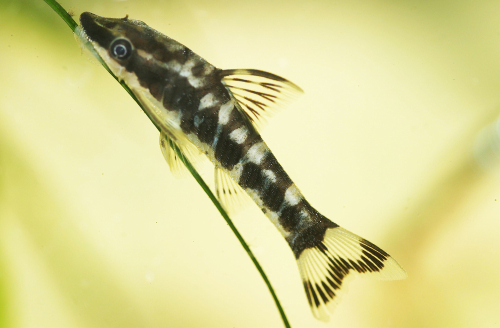
The Zebra Otocinclus holds a distinctive appearance, featuring a unique pattern of vertical black and white stripes that resemble a zebra. This species thrives in a well-oxygenated environment with plenty of hiding spots among plants and rocks. They make a beautiful addition to a community tank due to their peaceful temperament and active nature.
These are just some of the fascinating Otocinclus varieties that aquarists can choose from. Each species has its unique traits, but all of them share their love for consuming algae, which contributes to a healthier and cleaner tank.
When selecting an Otocinclus, consider the species’ requirements and compatibility with your existing tank setup to ensure their well-being and integration with other aquatic inhabitants.
5. Dwarfsucker (Otocinclus Vestitus)

The Dwarfsucker Otto catfish is a species that’s mostly found in the Parana and Amazon rivers. Their body shape is cylindrical, narrowing towards their head and tail fins, and the rows of hard scales across their body (especially their back) serve as armor-plating. The Vestitus reach about 1.3 inches, which makes them quite small, compared to the Otocinclus max size of about 2 inches.
Health and Diseases
Otocinclus catfish are generally considered low-maintenance and well-suited for beginner hobbyists. However, like any fish, they can still suffer from diseases and health issues related to water conditions and environmental factors.
This section will discuss some of the common diseases and preventive measures to ensure healthy Otocinclus catfish in your aquarium.
Common Diseases:
The most common Otocinclus disease is White Spot Disease, caused by a parasitic infection due to the single-celled organism Ichthyophthirius multifiliis. Affected fish will exhibit small white spots on their body.
Another notable issue is Red Belly Disease, which is characterized by a red or inflamed belly on the fish.
Water Quality:
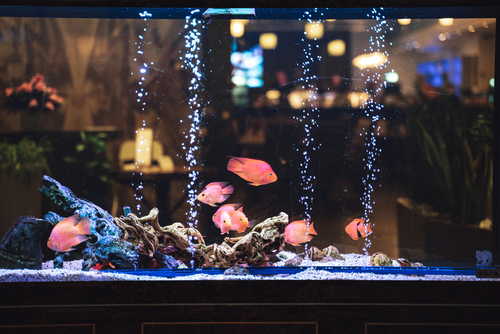
To maintain good health, it is essential to ensure the proper water conditions in the tank. High levels of ammonia and nitrates are harmful to Otocinclus and can lead to illnesses.
Regular water changes (weekly or bi-weekly) and testing can help maintain a balanced environment and prevent any build-up of toxic substances.
Additionally, it’s crucial to provide proper filtration and avoid sudden fluctuations in temperature or water parameters.
Preventive Measures:
Preventive measures can help avoid diseases and ensure a healthy environment for the Otocinclus catfish. Some practical steps include:
- Regular water changes to maintain a clean and stable environment
- Ensuring compatibility with other tank mates to reduce stress
- Providing a proper and balanced diet to keep your fish healthy and strong
- Quarantining new fish before introducing them to the main tank to prevent the spread of disease
- Monitoring water parameters and making necessary adjustments to prevent stress on the fish
It’s important to remember that even low-maintenance species like the Otocinclus catfish require consistent care and attention to maintain their health and well-being.
By following these guidelines, beginner and experienced hobbyists alike can enjoy a thriving, happy community of these fascinating fish.
Conclusion
Otocinclus catfish are a popular choice for many aquarium enthusiasts due to their peaceful temperament and efficient algae-eating abilities. Belonging to the Loricariidae family, these small catfish are native to the Amazon River in South America.
Their gentle nature allows them to readily cohabitate with other peaceful fish, making them excellent additions to most community tanks.
When it comes to their care, Otocinclus catfish do not require extensive level of maintenance. Providing a well-vegetated tank environment is crucial for the well-being of these fish, as they thrive in settings that mimic their natural habitat.
Providing them with an algae-rich diet is essential to keep them healthy and assist in their role as highly effective aquarium cleaners.
It is important to note that despite their hardiness, Otocinclus catfish have specific requirements when it comes to water quality and tank conditions. Maintaining a stable water temperature and pH level and ensuring proper filtration is necessary for their survival.
Aquarists should also be cautious about adding new tank mates, as certain aggressive species may threaten these gentle fish.
All things considered, Otocinclus catfish are an excellent option for beginner and advanced aquarium keepers looking to enhance their tank’s ecosystem.
Their algae-eating prowess, peaceful nature, and compatibility with various tank mates make them valuable assets to any freshwater aquarium. With proper care and attention to their specific needs, these remarkable fish can bring years of enjoyment and function to an aquatic environment.
Frequently Asked Questions
How many Otocinclus should be kept together?
Otocinclus catfish are social creatures and should be kept in groups of at least 5-6 individuals. Keeping them in groups allows them to exhibit their natural behaviors and feel more secure in their environment.
What is the maximum size of Otocinclus Catfish?
Otocinclus catfish are small-sized fish, typically reaching a maximum size of 1 to 2 inches in length. Due to their small size, they are suitable for nano and planted tanks.
Are Otocinclus suitable for beginners?
Yes, Otocinclus catfish are suitable for beginning fishkeepers. They are relatively easy to care for, have low maintenance requirements, and are flexible with their living conditions. However, keeping them in a well-established and planted tank with stable water conditions is essential.
Do Otocinclus Catfish show aggressive behavior?
Otocinclus catfish exhibit peaceful and non-aggressive behavior. They can be safely paired with various tank mates, making them an excellent addition to community aquariums.
What are the ideal water conditions for Otocinclus?
Otocinclus catfish thrive in water temperatures between 72-79°F (22 to 26°C), with a pH range of 6.0-7.5. They prefer soft to medium-hard water, with a general hardness of 6-15 dGH. It’s essential to maintain stable water conditions to prevent stress-related issues.
What do Otocinclus Catfish eat?
Otocinclus catfish mainly feed on algae, which makes them valuable algae cleaners in the aquarium. In addition to algae, they may consume biofilm, detritus, and plant matter. Provide them with supplemental foods such as algae wafers, boiled vegetables, and blanched greens to ensure a balanced diet.
Key Takeaways
- Otocinclus catfish are small, peaceful, and efficient algae-eaters ideal for community aquariums.
- They require a well-maintained tank with plants and hiding places to thrive.
- Compatibility with a variety of tank mates makes them a versatile addition to aquariums.
Check out these other related posts:

Veteran fish keeper and keen hobbyist with a serious case of MTS. My midlife crisis was the establishment of a fish room, much to my wife’s horror. Little does she know it could be worse!!


